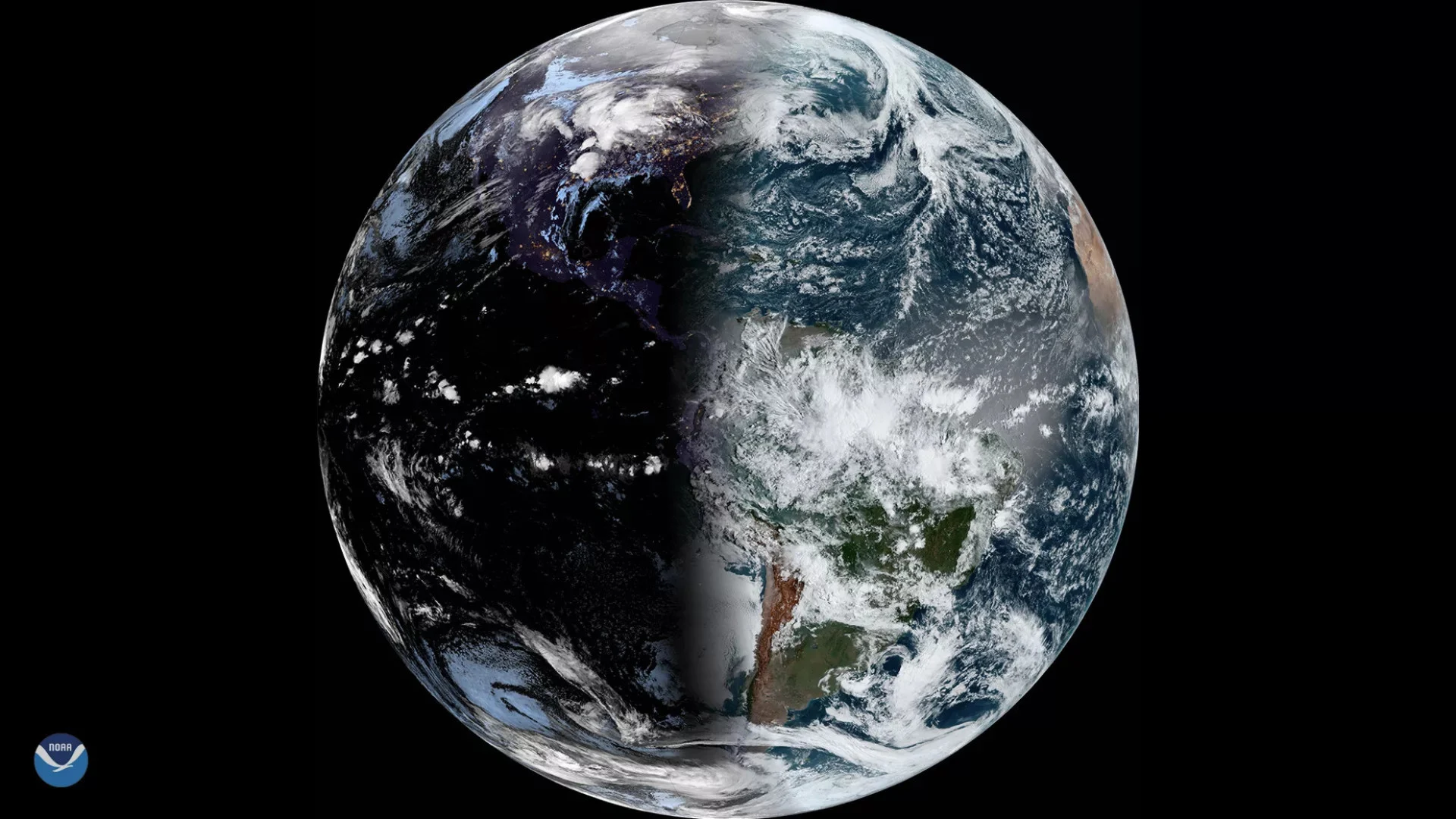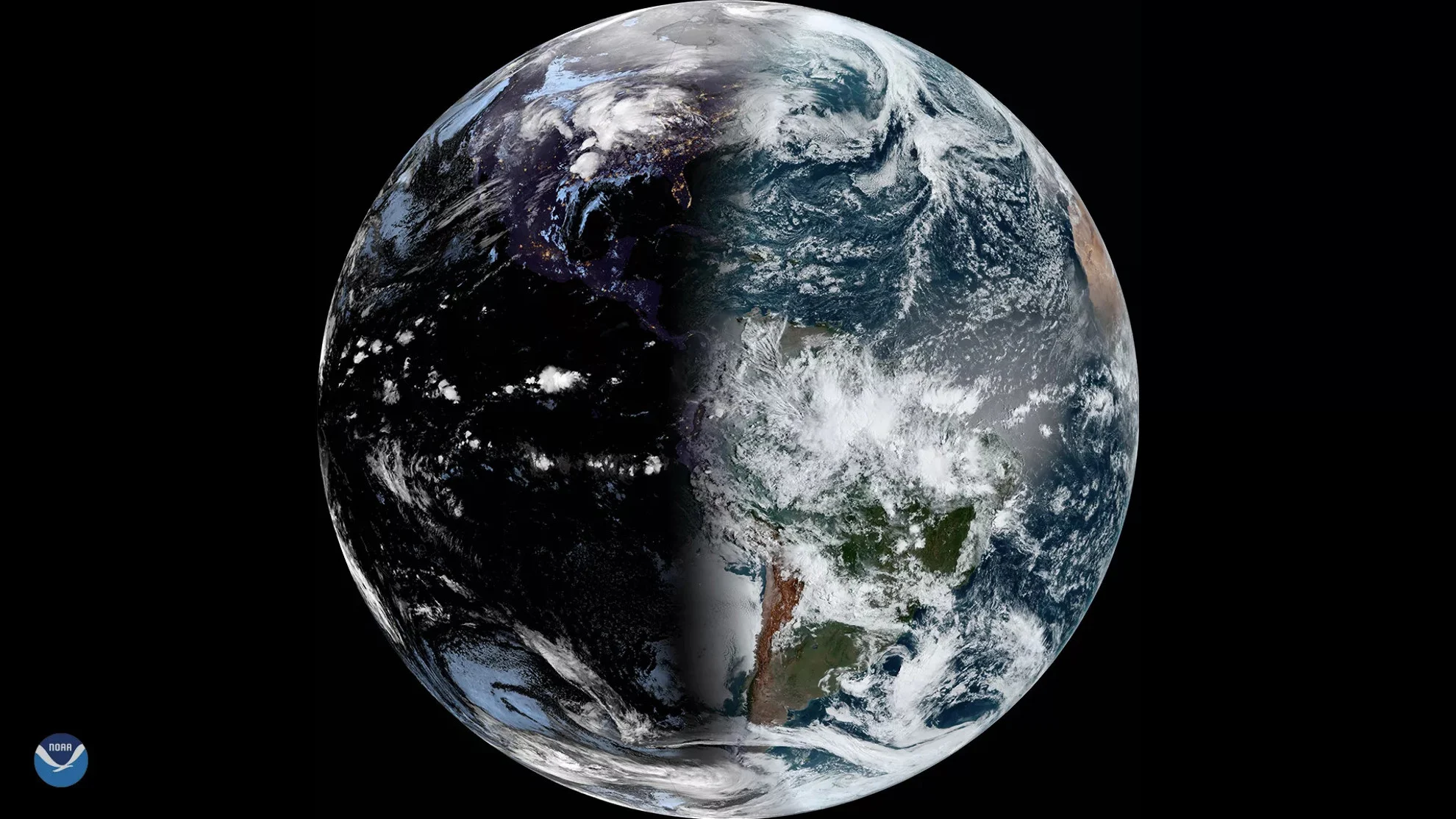
Earliest vernal equinox in 128 years kicks off Spring 2024
Regardless of what your favourite prognosticator said on February 2nd, spring is definitely arriving early this year.
The vernal equinox has arrived, giving us equal day and night. There's something special about this one, too — it's the earliest we've seen in North America in over a century!
At exactly 11:06 p.m. EDT on March 19, 2024, the Sun crosses the celestial equator from south to north. This will signify the start of spring for the northern hemisphere!
The day itself is similar to every other vernal equinox, with nearly equal day and night for the planet. However, it's also remarkable, as it is the earliest vernal equinox in 128 years.

This image, taken by the GOES-16 weather satellite in geostationary orbit above northern South America, captured the March 19, 2020 vernal equinox, which was the earliest in 124 years at the time. Credit: NOAA
In 2020, the spring equinox was the first to occur on March 19 — at least for those of us in North America — since 1896.
This trend continues in 2024.
DON'T MISS: Everything you need to know for April's spectacular and rare solar eclipse
Why so early?
There are two factors behind why the vernal equinox occurs as early as it does in 2024.
The first is the February 29 'Leap Day' that was added to our calendar this year.
Our calendar usually counts out a total of 365 days. However, once every four years, we add an extra day. Why? Because our planet actually takes longer than 365 days to travel around the Sun.
To be more exact, Earth takes an average of 365 days, 5 hours, 48 minutes, and 45 seconds to complete one orbit. This is known as a solar year.
So, each time we come around to the vernal equinox, the Sun crosses the celestial equator, travelling from south to north, nearly six hours later than the year before.
If we did nothing about it, after four years of this, the date of the vernal equinox would advance to March 21. After another four years, it would advance to March 22. And this would continue, resulting in our calendar being offset by an entire season a little over 400 years later.
Watch below: What would happen if we did not have leap years, presented by Dr. James O'Donoghue
Thus, to compensate for the extra time, we add one full day to the calendar every four years. That extra day — Feb 29 — effectively drags the vernal equinox back a day, preventing it from wandering. That way, the calendar and the seasons stay synced.
However, there's one problem. Adding a whole day to the calendar every four years overcorrects for the extra time. Thus, each leap year since 1900 has seen the vernal equinox occur, on average, 45 minutes earlier than it did on the previous leap year.
Throughout the 20th century and the beginning of the 21st century, the equinox still occurred on March 20. In 2020, though, we saw the equinox flipping back to 11:49 p.m. EDT on March 19 for the very first time since 1896.
This year, the trend continues, with the equinox occurring 43 minutes earlier, at 11:06 p.m. EDT on March 19. Note that, according to Universal Coordinated Time (UTC), the equinox still takes place on March 20 this year. This is because UTC is roughly equivalent to Greenwich Mean Time (GMT), which is four hours ahead of Eastern Daylight Time. It's only in parts of the western hemisphere that are west of the Atlantic time zone that see the equinox on March 19 this year.
So, what changed in 1900?
That brings us to the second factor for why 2024 has the earliest vernal equinox in 128 years: 1900 was not a leap year.
SPRING 2024: Get an in-depth look at the Spring Forecast, tips to plan for it, and much more!
One hundred and twenty-eight years ago, in 1896, a leap year was observed, and the vernal equinox occurred at 9:23 p.m. EST on March 19. For the next three years after, the equinox moved forward by about six hours each time, getting later and later on March 20.
When 1900 rolled around, even though it would have been a leap year based on the once-every-four-years schedule, it was skipped. So, instead of the equinox being reset back to late on the 19th, it occurred at 8:39 p.m. EST on March 20.
See, adding a leap day to every year evenly divisible by 4 is just the first part of the rule for leap years.
The second and less well-known part is that we skip those leap years that are evenly divisible by 100 but not by 400.
Since the year 2000 can be evenly divided by both 100 and 400, it counted as a leap year. But since you can't evenly divide 1900 by 400, it didn't count.
That skipped leap year helped correct the overcorrection.
What's ahead
Due to leap years, the vernal equinox continues to get earlier and earlier every fourth year.
In 2024, it's the earliest in 128 years. However, during the next leap year, the record for earliest vernal equinox will take a substantial leap forward.
In 2028, the spring begins at 10:17 p.m. EDT on March 19. Rather than it becoming the earliest start to spring in 132 years, though, it will technically be the earliest in 232 years!
Since the 1896 vernal equinox was at 9:23 p.m. EST (the equivalent of 10:23 p.m. EDT), to find an earlier one we have to look all the way back to when it occurred at 3:36 p.m. local mean time on March 19, 1796.

Looking forward, the earliest vernal equinox we'll see in the next century will be on March 19, 2096, at 10:04 a.m. EDT.
After two centuries of 'overcorrection' via leap years, that will be one of the earliest starts to spring ever.
However, the following year — 2100 — will be skipped as a leap year, the equinox will shift back to March 20, and the whole pattern will start over again.
Thumbnail image is of the March 20, 2023 vernal equinox, seen from space via NOAA's GOES-16 geostationary weather satellite.











